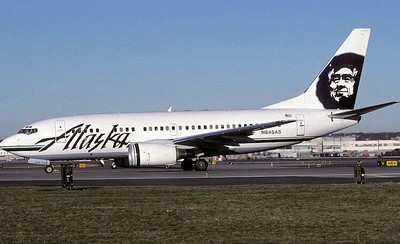New Ground Air Units, Retrofits 737s With Winglets
Alaska Airlines announced Monday it recently began using mobile
ground-based air units for cabin venting, cooling and heat on
parked aircraft at nearly all its gates at Seattle-Tacoma
International Airport. The airline also announced it has
retrofitted all its 737s capable of using blended winglets. The two
projects are the latest in a series of ongoing initiatives by the
carrier to conserve fuel and reduce carbon emissions.

Since 2002, these efforts have reduced the amount of fuel Alaska
Airlines uses to transport one passenger one mile by 17 percent.
The accompanying reduction in carbon dioxide emissions is
equivalent to taking 130,000 cars off the road for one year.
Of course, such measures don't simply offer environmental
benefits... but economic ones as well. The diesel-powered
preconditioned air units, along with ground-based electrical power,
replace the use of an aircraft's onboard auxiliary power unit
(APU), which runs on jet fuel. The ground-based units burn about 10
times less fuel than APUs, meaning the new units will significantly
reduce costs and benefit the environment by lowering carbon
emissions.
At Sea-Tac Airport, the use of preconditioned air units at 19
gates is expected to conserve more than 1.1 million gallons of fuel
per year, saving the company $2.6 million annually based on the
current pump price, said Kristin Fuson, an Alaska Airlines flight
operations engineer and the project manager. Although the units
burn diesel fuel, carbon dioxide emissions will be reduced by 24
million pounds a year because of dramatically less fuel burn, Fuson
said.
Annual savings will more than double to 2.4 million gallons of
fuel and $5.5 million once the units are in place at Alaska
Airlines' other hubs in Anchorage, LAX, Portland and San Francisco
later in the year.
Alaska Airlines had been moving toward using ground-based air
units for about two years. Fuson noted the units make even better
economic sense with oil prices hovering around $135 a barrel. The
airline has purchased or leased 33 mobile air units for the five
hub airports.
Even with the initial cost of $65,000 per unit, the machines pay
for themselves in about 11/2 years, Fuson said. If the project is
successful, more units will be purchased for other airports.
Starting in September, some fixed units will be installed at all
the hubs. The fixed units are powered by electricity from the
airports and do not burn fuel or produce emissions.
Earlier this month, Alaska Airlines also completed retrofitting
all its existing 737s capable of using blended winglets, matching
new aircraft delivered to the airline. Winglets improve an
aircraft's fuel efficiency and reduce greenhouse gas emissions by
about 3 percent -- or some 100,000 gallons a year per aircraft.
Alaska Airlines has undertaken several other fuel-saving
initiatives in the past year, including speeding up retirement of
its MD-80s to fly only more-efficient 737s.
As ANN reported, the airline's remaining seven
MD-80s will be taken out of service August 25 instead of the end of
December, as originally planned.
The carrier has also joined with other airlines in using only
one engine when taxiing, and employing satellite-based en-route
navigation. The carrier also switched to lighter-weight catering
carts in 2006; that change alone has saved nearly 300,000 gallons
of fuel annually, Alaska said.
 NTSB Final Report: Rutan Long-EZ
NTSB Final Report: Rutan Long-EZ ANN FAQ: Turn On Post Notifications
ANN FAQ: Turn On Post Notifications Classic Aero-TV: ICAS Perspectives - Advice for New Air Show Performers
Classic Aero-TV: ICAS Perspectives - Advice for New Air Show Performers ANN's Daily Aero-Linx (06.28.25)
ANN's Daily Aero-Linx (06.28.25) Aero-News: Quote of the Day (06.28.25)
Aero-News: Quote of the Day (06.28.25)



